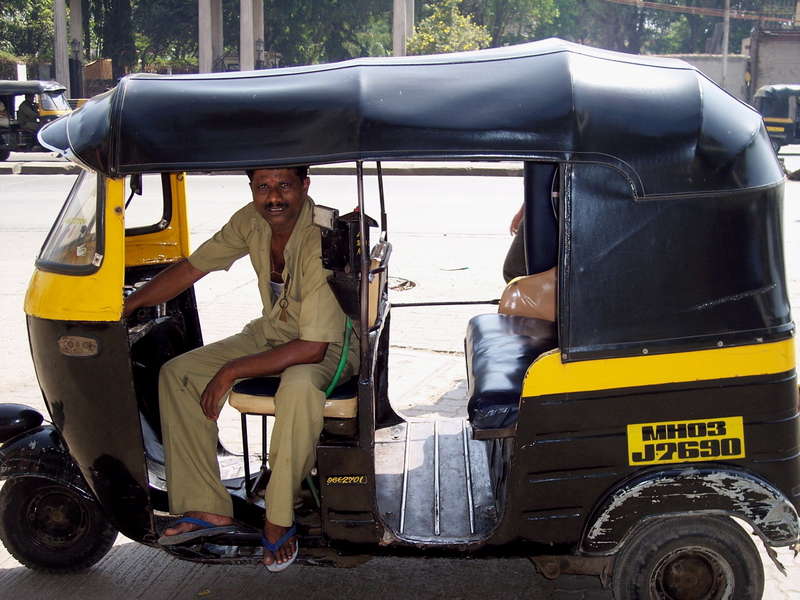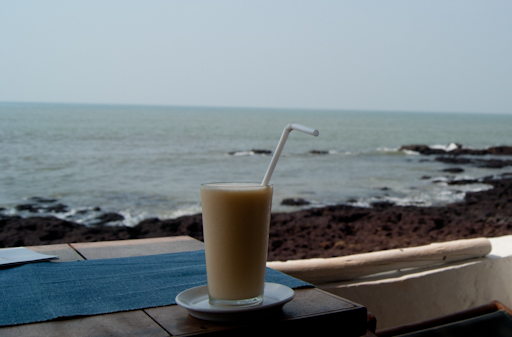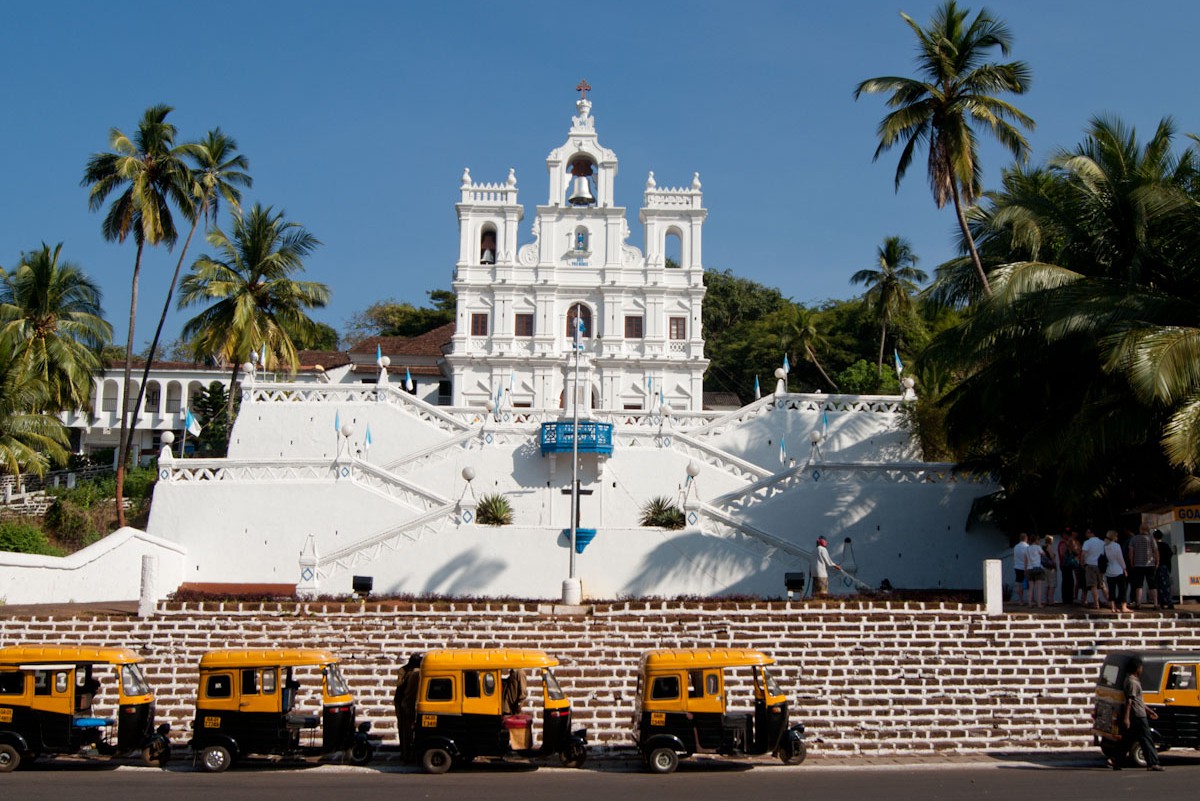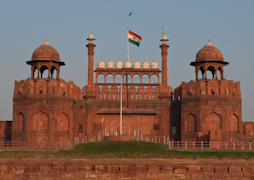Odds are you won’t be able to spend a day in India without someone trying to get the better of you. From the predictable to outrageous, mundane to ingenious, India has it all on display. The reasons for this are numerous. Bollywood has publicized a notion that Westerners are minted. Given that half the country lives on less than 2$ per day, who’s to argue with that. A Westerner in India sticks out like an Irishman at an AA meeting and everyone from the poor rickshaw guy to the town crook is going to have a go at you. Crooks will always attempt to exploit your naivety to run away with your money. It’s a battle of wits out there. If you manage to keep your cool and think like a con artist, you will survive. And if it makes you feel any better, once in a while even an Indian falls victim to these scams.
As with most things Indian, international standards are rarely adhered to. Even among crooks. With their constantly expanding repertoire, it’s difficult for any Indian cheat sheet to be comprehensive. To avoid stating the obvious, I’ll ignore kinder-garden tricks such as the good-old distract and pickpocket, cow dung on the shoes, I’m an English student, etc. Here’s a list of scams that should get you into the Indian frame of mind.
Rickshaw Meter Acrobatics
 Most taxi tricks are pretty obvious to figure out – ludicrous pricing, deviant routes and dark alley robberies are the text book scenarios. India has another variant. While you’re busy sticking your head out of the door, tongue hanging out, admiring the skill of your friendly neighbourhood two-wheeler, your auto-rickshaw meter has just jumped from 20 to 30, skipping all the small but important numbers in between. Either that or once you’re in the rickshaw, the meter ticks faster than the seconds hand on your watch. On confronting the driver with the jumping meter, he will defend himself with ignorance, innocence and arrogance, in that order. The only choice you have at this stage is to stop the rickshaw, pay him half of what the meter says and leg it. Unless you’re a local and you know roughly what the ride should cost, you’re defenseless against this one. Just pray that the meter doesn’t jump from 10 to 110.
Most taxi tricks are pretty obvious to figure out – ludicrous pricing, deviant routes and dark alley robberies are the text book scenarios. India has another variant. While you’re busy sticking your head out of the door, tongue hanging out, admiring the skill of your friendly neighbourhood two-wheeler, your auto-rickshaw meter has just jumped from 20 to 30, skipping all the small but important numbers in between. Either that or once you’re in the rickshaw, the meter ticks faster than the seconds hand on your watch. On confronting the driver with the jumping meter, he will defend himself with ignorance, innocence and arrogance, in that order. The only choice you have at this stage is to stop the rickshaw, pay him half of what the meter says and leg it. Unless you’re a local and you know roughly what the ride should cost, you’re defenseless against this one. Just pray that the meter doesn’t jump from 10 to 110.
Closed for Business
If someone tells you that a tourism office, hotel, travel agent, monument, etc. is closed or does not exist, your radar should smoothly slip into overdrive mode. Watch the person’s next move very carefully. What do they suggest you do next? And how do they intend to profit from it?
Begging Cartels
This one’s the most unbelievable of the lot. The tiny 5-year old kid pressing her scruffy face against your car window has a boss and the 10 rupees that you gave her doesn’t go towards a snack to quell her hunger. It goes towards supporting an entire begging industry that feeds on people’s sympathy and ironically their lack of concern. The begging industry in India includes 7.3 million people and churns out annual revenues to the tune of Rs 1.8 billion. So the 10 rupees you handed over might have bought you some peace of mind but if anything, it probably has done more harm than good.
Wax Men
This one has the distinction of being an Indian beach special. As you’re walking along the beach, minding your own business, you feel an unknown object being violently thrust into your ear. A wet willie without the wet. At the risk of sounding stupid, the reason this con-man has snuck up from behind you and wedged a metal wire into your ear is because he wants to sell you a service – ear wax cleaning. Why they would choose to approach their clients in such a careless and uninspiring manner is still a mystery. Rumour has it that they use sleight of hand to extract a pound of wax from your ear and then go on to demand equally ridiculous amounts for this treatment. A growing stream of them on the beach suggests that business must be good (Otolaryngologists looking for a retirement plan please take note).
No Change
Walk into a store and bargain until your face turns red. The shopkeeper finally relents and sells that adorable little elephant with a bell (why the bell?) to you for Rs 400. Just as you’re giving yourself a pat on the back, the street vendor grabs your 500 rupee note and refuses to give you your change back. You beg, plead, cry, yell and threaten, all to no good. You’ve got no choice but to buy something more from the shop worth Rs 100. Daylight robbery or hard sell? Tough to tell.
Shower with an Elephant
Get rid of visions of jumbo the elephant thrashing about in a cool stream, sucking up water into his trunk and then spraying it on himself to cool down on a hot summer’s day. Despite the ticket suggesting otherwise, you’ll be faced with a grumpy elephant, being threatened by a mahout brandishing an ugly iron hook while simultaneously being hosed down with brown water from a garden pipe. Yippee!
Take Home the Taj
Some fraudsters take the game up a notch by claiming to be direct descendants of the original builders of the Taj Mahal commissioned by Shah Jahan (history check – the architects and workmen had their arms chopped off, eyes gorged out or just killed. Work ethics in India has improved since). Once they’re done with their elevator pitch, they whip out a miniature Taj carved from the original marble quarry. What’s even more incredulous is that some tourists actually fall for this.
Branding

With such intense competition, branding is an integral part of any strategy to stay ahead of the pack. Given the MBA craze in the country, it’s not surprising that some clothes vendors take this hocus pocus to heart. They take regular cotton shorts worth nothing, brand the material as ‘Gandhi cotton’ (which they claim is sacred) and then sell them off at a cool 500 Rupees (10$).
Incredible India indeed!
Before you start walking around with a pocket knife in your pocket (where else?), it’s good to put things in perspective. Indian scams usually involve some poor guy trying to make a quick buck or a crook testing your gullibility. What they don’t involve is football hooligans with beer in their bellies or kids with red hair armed with shotguns. Treat the whole situation as a game with low stakes. Worst case scenario, you lose a few hundred rupees and escape with a great story to tell at your next dinner party. Best case scenario, you con a con-man.
When faced with a beach, we realize how insignificant we, as individuals, are compared to nature. This evokes emotions of awe, which in turn leads to a trivialization of our anxieties followed by a deep reflection on how we fit into the big picture. In other words, what is the meaning of life? Beaches are powerful escapes from the ordinary and if you feel like you need a break, it just might be time for another beach holiday.
Having grown up along the beautiful beaches of Goa, allow me guide you through a selection of what possibly are the best beaches in Goa and the World (the latter claim is understandably unsubstantial but thrown in nevertheless for dramatic effect).
#1. Vagator Beach
Vagator boasts of the best beaches (and raves) in Goa. Comprising of 3 beaches, the largest beach is popular with day-trippers who show up in the hundreds to pose for photographs. However, within a few hours, the day-trippers are herded back onto their buses and the beach drifts back into obscurity. Beach number 2, Ozran is a stretch of brown volcanic sand hidden by rocky cliffs and is relatively peaceful due to its inaccessibility. Little Vagator to the south is known for its iconic Shiva carving that has made its way onto many postcards. It’s also known as Spaghetti beach because of its popularity with the Italians.

#2. Anjuna Beach
Right next door to Vagator is Anjuna, a stalwart on the Goa scene. Although the beach is nice, the reason for Anjuna’s popularity transcends the beach. Anjuna is the birthplace of Goa trance, the genre of music that has evolved in Goa over the past 20 years. Music and parties aside, Anjuna comes alive every Wednesday with everyone heading to the massive flea market.
#3. Arambol Beach
Until 10 years ago, no roads to this beach existed. Now, haphazard roads and makeshift houses have sprung up making Arambol the new hippie haven. The beach is beautiful and beach huts on a hill that overlooks the entire stretch, can be had for a pittance. No wonder people come here and refuse to leave. It’s also the reason why you won’t find anything Goan on this beach. The hippies have taken over and they’ve imprinted a traveller culture on to this beach. Every evening, all the travelers gather on the beach and dance to the beat of drums as the sun sets. All in all, quite a surreal experience.

#4. Ashvem Beach
If you’re a selfish person, unwilling to share your precious piece of sand with anyone, Ashvem’s just what the doctor ordered. Empty stretches of beach with calm water make this a perfect picnic spot. The road extends until the beach making Ashvem surprisingly accessible. Sit back, relax and get your tan on..

#5. Palolem Beach
Once Goa’s best kept secret, Palolem is no longer an undiscovered paradise. Palolem has leapfrogged in the game and made its way onto every tourist’s checklist. White sand, shallow waters and a coconut tree studded coast is what Palolem is all about. Hidden away in South Goa, the atmosphere here is very laid back. Every Saturday night, the beach plays host to a silent noise party where the entire party moves to music played over wireless headphones until the wee hours of the morning.

BONUS – Patnem Beach
Just 50 metres south of Palolem lies a tiny cove, hidden from view by a set of rocks. Although the rocks make swimming impossible, this is the perfect place to stare into the sunset and figure out the meaning of life.

Street Music at Anjuna Beach, Goa
Anjuna comprises of tiny, peaceful stretches of brown beaches hidden between rocky cliffs. Sitting at one of the quirkier restaurants along the edge of the ocean, dinner was interrupted by a pair of French travelers singing (or busking) for their supper. What ensued was a remarkable trip back into the 1950s..
Describing Goa as having quite a few Churches would be an understatement. For instance, asking for directions in Goa would result in horrible directions with references to either a Church or a bar or most likely – both.
Goa stands apart from the rest of India because it was a tiny enclave ruled by the Portuguese while the British ruled the rest of India. Even as Gandhi was driving the British up the wall, the Portuguese empire in Goa remained unperturbed and relatively peaceful. In fact the Portuguese outlived the British and ruled over Goa for 451 years. It wasn’t until 19th December, 1961 that the Portuguese were unceremoniously kicked out by the Indian army with one of the shortest wars in the history of the World that barely lasted for a day.
Time has healed many of the wounds of colonialism and most people have forgotten the price they paid for freedom. The only memory of the Portuguese that remains are the beautiful Churches and houses that are scattered across this tropical paradise. Churches or even buildings of this stature have not been seen ever since in Goa.
Just as a one eyed man is king among the blind, a few Churches in Goa stand taller than the rest, displaying the magnificence and exuberance of this Portuguese colony at its zenith.
#1. Se Cathedral (1619)
Se Cathedral is one of the largest Churches in Asia and is dedicated to St. Catherine. Built to commemorate the victory of the Portuguese over the Muslim rulers of Goa, it took almost 80 years to build. Legend has it that the Golden bell of this Cathedral could be heard all over Goa. One of the bell towers was destroyed during a lightening storm leaving the Church with a unique asymmetrical structure. Don’t judge a book by its cover as this Church contains 14 alters on the inside, with each being more intricately carved than the next.
#2. Bom Jesus Basilica (1605)
Apart from its unique baroque architecture, this Basilica is significant to the Goans since it holds the mortal remains of one of the patron Saints of Goa – St. Francis Xavier. Francis Xavier died on board a ship and his body was taken to Malacca, also a Portuguese colony at that stage. It was later decided that he should be buried in Goa. On the arrival of his body in Goa, more than 2 years after his death, people noticed that Francis Xaviers body hadn’t decomposed. The Church has deemed this to be a miracle and St. Francis Xaviers body is put on display to the public every 10 years (next being 2014). A silver casket designed in the 17th Century holds the remains of this Saint.
#3. Church of Our Lady of the Immaculate Conception (1541)
One of the oldest Churches in Goa, this Church is located at the centre of Panaji, the Capital City. The Church towers over the City with a statue of Mother Mary at the front casting a watchful eye over its inhabitants. Originally built to welcome sailors home, the Church is over 450 years old and is beautifully preserved. The Church is used even to this very day with devout Catholics stopping by to pray en route to work.
#4. Church of St. Catejan (1700)
Defying the norms, this Church was built by a few Greek and Italian priests at the turn of the 17th Century. This Church was modeled on St. Peters Basilica in Rome and stands in start contrast to the rest of the Churches built in the Portuguese era. Despite being over 300 years old, the structure is well preserved, presumably due to the lack of tourist attention to this masterpiece.
#5. Church of St Francis of Assisi (1661)
Built at the back of the Se Cathedral, this Church has large shoes to fill. Stepping into this Church takes you back in time and beautiful painted panels depicting the life of St. Francis of Assisi adorn the walls. The seminary adjoining this Church has been converted into a peaceful art museum that houses most of the painting earlier placed at the Panaji Secretariat.
The Runner Up – Our Lady of the Mount (1547)
Despite being relatively modest compared to the other Churches, there’s nothing modest about the view from the hill on which this Church was built. The Church could be so much more but currently stands abandoned and left to the elements. However, even for just the view, this Church is worth a visit.
You’ve probably never heard of the Mughals. Yet every time a business magnate is referred to as a Mogul, he is compared to the Mughals who were famed for their wealth and power. Etymology aside, I bet the mention of butter chicken and naan is sure to bring back some fond memories.
The Mughals were Persian invaders who conquered India in the 16th century and proceeded to rule India for over 300 years. Their influence on the Country is visible even today. Mughal food is only one facet. Islam is another. And the Islamic influence that they brought to the architecture left an in-erasable stamp on India and the World. At its zenith, the Mughal empire ruled over 25% of the World’s population. Impressed?
A city with 20 million people hardly seems like the best place to go hunting for Mughal architecture. New Delhi although flat, hot and crowded, has a wealth of beauty hidden behind the chaos. Surprisingly enough, the city houses 3 world heritage monuments and a host of other beautiful structures. Most city dwellers see nothing out of the ordinary as they drive past a huge 600-year old structure on their way to the market. For a person new to the city, this is a priceless find.
Just to give you some background, the Mughal Emperors ruled over India in the following order: Babur – Humayun – Akbar (the Great) – Jehangir – Shah Jehan – Aurangzeb. Enough about Mughal history, more on the big 5 below..
Humayuns Tomb
Widely acclaimed to be the precursor to one of the World’s wonders – the Taj Mahal, the resemblance is uncanny. As with many Mughal monuments, this gigantic tomb for King Humayun is built from red sandstone. Babur, Humanyun’s father, requested to be buried under the stars and so his relatively modest tomb lies in a corner of the gardens of Humayuns tomb.
Qutub Minar
No one know why this monument was built. Some say as a symbol of victory and some say it was a tower for prayers. That aside, the Qutub Minar was built in the 13th Century and to this very day, towers over Delhi. At a staggering 240 feet, the monument is adorned with beautiful red sandstone carvings and an occasional parrot on the outside. The tower has been closed to the public after a few suicide cases. Most of the buildings in the Qutub Compex lie in ruins. The iron pillar next to the Qutub Minar is one of the World’s oldest metallurgical works. Legend has it that if you can wrap your arms around it with your back against the pillar, your wish will be granted. The iron pillar now has an iron railing around it, protecting tourists from themselves.
[Update 1/11/11] Some of my astute readers have pointed out the the Qutub Minar wasn’t built by the Moguls but was built by the Khiljis which was one of the Dynasties that preceded the Moghuls.
Hazrat Nizamuddin Dargah
Nizamuddin was one of the most popular Sufi Saints from the 13th Century. To this very day, many Indians flock to his tomb to pray to Saint Nizamuddin. Although this tomb is located right next to the posh, well maintained Humayun’s Tomb, the neighbourhood deteriorates a bit and gives you a glimpse into the chaos that is truly India. Shop keepers fight for a chance to sell you flowers for the tomb and people yell at you to leave your footwear outside. Once you get into the courtyard, you’ll see both devout Muslims and Hindus worshipping this Saint, hoping that their prayers are answered. All in all quite an extraordinary experience.
Red Fort
Shah Jehan (of Taj Mahal fame) made Delhi his Capital and renamed it as ShahJehanabad. He also commissioned the Red Fort to mark this event. The Red Fort lies smack in the middle of Delhi. Although not as intricate as the other Mughal monuments, the Red Fort is remarkable for its vastness and its red sandstone architecture. Most of the residential palaces within the fort were destroyed when the British captured the fort in 1857.
Jama Masjid
The Jama Masjid translates to “Friday Mosque” and also dates back from the Moghul era (Shah Jehan at it again). Stepping out of the chaos of the adjoining market and into the mosque’s courtyard, you are enveloped by a sense of calm and awe. If there is a God, he must surely be here.
The mosque and its surroundings are not well maintained and lie in stark contrast to the rest of the monuments from the Mughal era. The reason being that it’s treated as a place of worship rather than a monument from a previous era. The Jama Masjid has the potential to be so much more if only people were able to set aside religion and recognize the cultural significance of this monument. Sadly enough, this is not an isolated case and mindless religion (everywhere) continues to be one of India’s greatest challenges.

















































